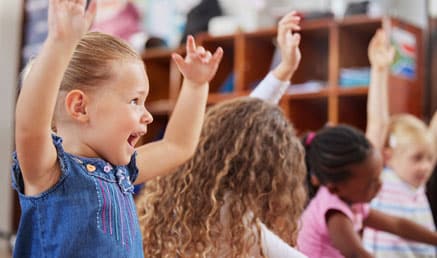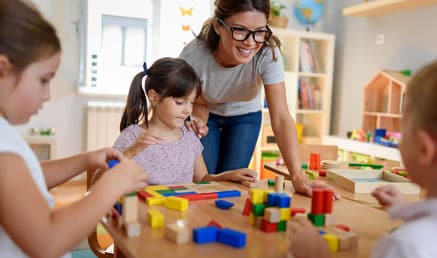
“It’s our polite nudge in the ribs to help you and your team stay organised and on task.”
This week’s subject is Management systems.
Element 7.1.2: Systems are in place to manage risk and enable the effective management and operation of a quality service that is child safe.
Have you ensured your service’s policies, procedures, and systems are up to date to comply with the new child safety regulations that came into effect this month (1 September 2025), and are you ready for the upcoming changes to the National Quality Standard in January 2026?
To ensure compliance with the NQF, Services must ensure that comprehensive and effective management systems are in place to strategically identify and minimise organisational risks in a timely manner and carry out risks assessments, as required to manage foreseeable risks to children’s safety and wellbeing.
The recent regulatory updates were introduced to make ECEC services safer for children, following the 2023 Review of Child Safety Arrangements. These updates focus on practical steps like managing digital technologies, reporting incidents sooner, and banning vaping devices. Changes to the NQS, particularly Element 7.1.2 (Management Systems), will be implemented from 1 January 2026, with a sharper focus on child safety.
What’s already in effect (Since 1 September 2025)
The changes that began on 1 September 2025 introduced targeted refinements to sharpen the focus on child safety across the sector. Services must now have in place:
Safe Use of Digital Technologies policy and procedures: Regulation 168 now requires all services to have a policy and procedures in place that address how services will safely use and manage digital devices and online environments at the service. This covers:
-
- The taking, use, storage and destruction of images and videos of children being educated and cared for by the service.
- Obtaining authorisation from parents to take, use and store images and videos of children being educated and cared for by the service.
- The use of any optical surveillance device at the service (e.g. CCTV).
- The use of any digital device issued by the service.
- The use of digital devices by children being educated and cared for by the service.
The service policy and procedures for the safe use of digital technologies and online environments should align with the National Model Code for taking images or videos of children.
Reduced Reporting timeframes for allegations or incidents of physical and sexual abuse (r176): If there’s an allegation or incident of physical or sexual abuse involving a child at your service, you now have just 24 hours (down from 7 days) to notify the regulatory authority. Ensure your service’s reporting procedures, relevant policies and resources have been updated to reflect the reduced notification timeframe and ensure that educators, staff and volunteers are aware of and understand their obligations and reporting requirements.
Service environments must be free from vaping substances and vaping devices (r82):
The implemented updates to regulation 82 mean that approved providers must ensure that service environments are free from the use of vaping substances and vaping devices, in addition to service environments that are free from the use of tobacco, illicit drugs and alcohol. Management should consider what strategies will be implemented to ensure a child safe environment that is free of vaping substances and devices. Services should ensure that these updates are reflected in any relevant policies and resources i.e., Providing a Child Safe Environment Policy and Procedure and Educator Handbook. Ensure that educators, staff and volunteers are aware of and understand their obligations and the services updated procedures for ensuring a child safe environment free from use of vaping substances and vaping devices.
Preparing for updates to the NQS (1 January 2026):
In January 2026, the NQS will be updated to emphasise the focus on child safety. These updates will apply to Quality Areas 2 and 7. This will reinforce the existing intent of the NQS regarding quality education and care services being child safe services.
Element 7.1.2 will have an added child safety focus. “Systems are in place to manage risk and enable the effective management and operation of a quality service that is child safe.” The addition of “that is child safe” means reevaluating how your service’s management systems, including risk management, policy review/development, staff training, and resource allocation explicitly address child safety. The refinements emphasise that governance should support the operation of a “quality service that is child safe,” as outlined in the revised Standard 7.1. This requires systems that not only mitigate risks but also proactively promote ethical management and continuous improvement in partnership with educators, staff, and families.
Services can prepare by conducting a thorough audit of the current management systems against the January updates to the NQS, including element 7.1.2:
Policy and procedures review and development: Review and update policies, procedures and related resources that embed child safety as a foundational element. Ensure these are developed collaboratively with your team and families, and schedule regular, collaborative reviews to drive continuous improvement.
Risk management procedures: Strengthen systems for risk identification and mitigation with a child-safety lens. This could include strengthening staff induction procedures, ongoing professional development on child protection including recognising and responding to child maltreatment, abuse and neglect, mandatory reporting procedures, regulatory reporting procedures, and procedures for monitoring compliance with prohibitions on substances like vaping devices.
Fostering a child safe culture: Foster a child-safe culture through effective leadership and ongoing professional development and training. Adopt the practices of the recently released Child Safety Guides: NQF Child Safe Culture Guide and NQF Online Safety Guide. Review and reflect on the principles of the guides embedding them in everyday practice across the service. Train management and staff on their responsibilities, ensuring alignment with the refined NQS elements.
Resources:
Information sheet- NQF Child safety changes from 1 September 2025 and 1 January 2026
Safe Use of Digital Technologies and Online Environments- Policy Guidelines
National Principles for Child Safe Organisations
National Model Code – Taking images in early childhood education and care
Within System7 go to Quality Area 7/ Modules 4-27 to submit self-assessment notes and if required, open a QIP issue if you identify any areas of improvement.
The Childcare Centre Desktop has a range of resources to assist services with management systems. These include New Regulation Checklist, Child Protection Policy, Child Safe Environment Policy and Procedure, Child Protection Notification Procedure, CCTV Monitoring Letter to Families, Safe Use of Digital Technologies and Online Environments Policy and Procedure, Media Authorisation forms, risk assessment and safety check templates and much more.
Resources, NQS Element, Regulation and System7 links:
Childcare Centre Desktop – Childcare Centre Desktop
National Quality Standard – QA 7/ 7.1.2- Management Systems
National Regulations – 82, 168, 170, 171, 172, 176
System7 Module – QA7/ Modules 4-27
If you have any questions send us a note via the Contact page here!




